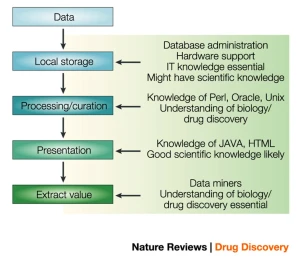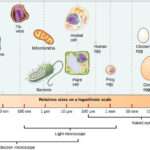
Searching for employment opportunities in the field of bioinformatics
June 4, 2024The unveiling of the draft sequence of the human genome in 2001 marked not only a momentous scientific achievement but also heralded the dawn of bioinformatics’ future. While bioinformatics had been steadily advancing since the mid-1990s, the post-genomic era ignited a surge in data-driven biomedical research. As information on gene expression, protein structure, disease susceptibility, and other genomic facets flooded laboratories, pharmaceutical companies faced the daunting task of deciphering this torrent of data with precision and expertise.
In the nascent stages, personnel recruited for bioinformatics roles typically fell into two categories: biologists with rudimentary computer skills or computer scientists with basic biological knowledge. Predominantly, companies leaned towards the former group. Proficiency in computer languages was a prerequisite for bioinformaticians, yet a profound grasp of biology was deemed essential for navigating biological data and extracting meaningful insights.
Naturally, individuals proficient in both biology and computer science found themselves in high demand, enjoying the luxury of selecting positions and negotiating salaries at their discretion. To address the scarcity of such hybrid talent, numerous M.Sc. programs in bioinformatics, chemoinformatics, and specialized IT courses emerged, catering to graduates lacking a comprehensive background in the field.
However, the landscape of bioinformatics is subject to market fluctuations. In recent years, companies have experienced fluctuations, exemplified by the rise and fall of entities like Double Twist in 2002. Leading players in the field, such as Celera and Incyte, have transitioned from pure informatics-centric models to more applied methodologies.
Recruiters at major pharmaceutical firms note the increasingly competitive environment for bioinformatics novices. A surge in applicants, particularly those with relevant experience, has intensified the recruitment process. Companies now prioritize candidates with hands-on experience applying specific algorithms over those merely acquainted with them.

bioinformaticsjobs
Therefore, aspiring bioinformaticians can enhance their prospects by demonstrating practical application of their knowledge. Industry placements or roles at esteemed institutes like the European Bioinformatics Institute bolster one’s CV. Some companies advocate pursuing a Ph.D. on a pertinent topic to gain valuable experience and bolster one’s publication record. Analyzing publicly available datasets, such as gene-expression data from microarrays, also provides valuable experience.
Despite the evolving landscape, bioinformatics remains a rapidly expanding domain. Major pharmaceutical firms rely on informatics to streamline operations, accelerate decision-making, and identify novel targets. Emerging disciplines like systems biology are poised to further elevate the demand for bioinformatics expertise. Accordingly, individuals with suitable backgrounds and experience stand to thrive in this dynamic field.
Key areas in bioinformatics encompass:
- Database Administration: Efficient management of data flow and storage by dedicated database administrators.
- Data Processing and Curation: Essential for linking data across disciplines and facilitating easy access.
- Data Presentation: Developing tools to visualize and present data effectively to scientists from diverse fields.
- Data Mining: Capturing, curating, and presenting data to extract valuable insights and information.
(Adapted from Lanfear, J. “Dealing with the Data Deluge.” Nature Rev. Drug Discov. 1, 479 (2002))

















